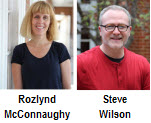
|
||
|
||
|
Objective: The goal of this study was to perform a content analysis of academic health sciences libraries' home pages in order to determine what features and design elements are most commonly used, which will help identify best practices to inform our library's website redesign project. Methods: We developed a unique checklist of 18 questions related to home page content and design features by selecting questions from other checklists and questionnaires and modifying them to suit our needs. Using this checklist, we collected data from 135 academic health sciences libraries' home pages from March 2017 through June 2017. The data was compiled in an Excel spreadsheet for analysis. Information obtained about the home pages include:
The most commonly used resources within a database-specific search box were journals, library catalog, PubMed, and books/ebooks. Facebook was the most common type of social media maintained by an academic health sciences library, with 50% of libraries linking to their Facebook accounts, followed by 49% linking to their Twitter accounts. Some 42% of academic health sciences libraries had links to their library blogs on the home page. Conclusion: About, services, resources, research, and help were the most common labels used in navigation bars, as well as lists of specific databases. The most commonly used labels for subject guides/LibGuides were research guides (30%), subject guides (21%), and guides (18%). The majority of the academic health sciences libraries have the following common design patterns:
Although library websites frequently undergo redesign and updates, this study provided a snapshot of the current commonly used elements and features of academic health sciences library home pages. The layout and topic/labeling trends identified in this study also helped guide our redesign, although we still opted to include a site map to aid navigation. |
||
| Copyright 2014 - Doody Enterprises, Inc. - All rights reserved |
